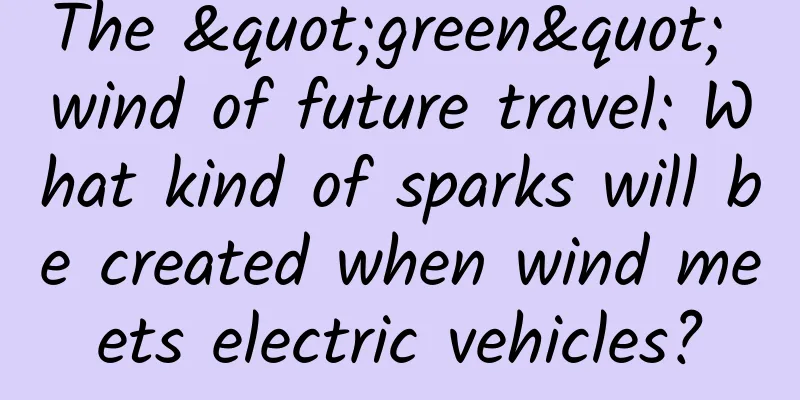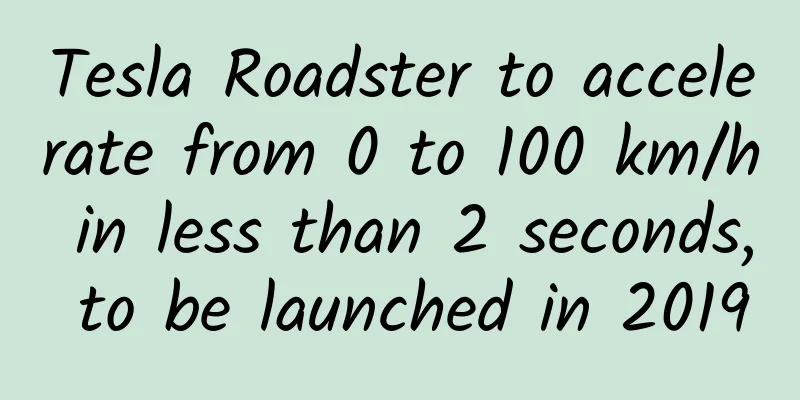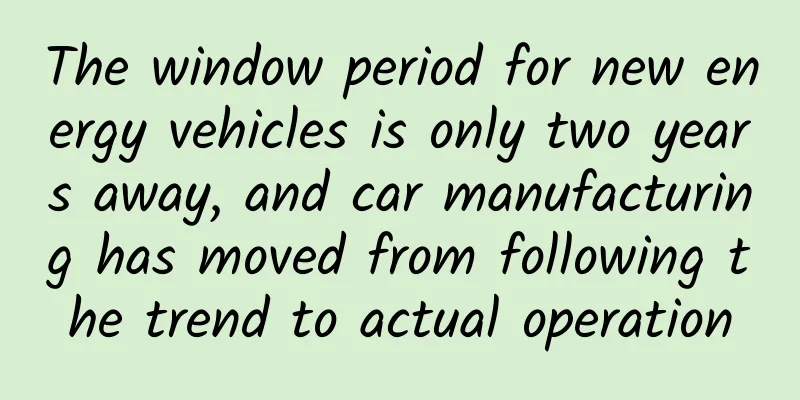The "green" wind of future travel: What kind of sparks will be created when wind meets electric vehicles?

|
Author: Duan Yuechu With the increasing attention paid to energy demand and environmental issues, the development and utilization of clean energy has become the focus. Electric vehicles with built-in wind power generation function have therefore come into being. This sustainable mode of transportation not only meets energy demand, but also reduces dependence on traditional energy and achieves energy self-sufficiency. In the United States, engineer Robert Yost developed a wind power generation device called MicroCube and applied it to the Ford C-Max Energi electric car, greatly improving the electric car's range. Yost was an aerodynamics expert at a well-known aerospace company. One day in 2011, Yost stood in front of the window and watched a tornado passing through. He noticed that the tornado had strong winds, causing surrounding objects to fly in the air and even forming a strong airflow rotation. This scene reminded him of the rotation of a fan in the wind, and he suddenly realized that if this wind force could be effectively utilized, then perhaps a new and efficient way of utilizing wind energy could be developed. Jaust set out to design a new type of wind power generation equipment. He combined his expertise in aerospace to design a unique wind turbine that can effectively use the rotational force of wind and convert it into electrical energy. He also studied how to maintain the stability and power generation efficiency of the equipment when the wind speed changes. After several years of hard work, Yaost finally succeeded in developing this new type of wind power generation equipment, which not only has high power generation efficiency, but also can operate stably under various wind speed conditions. The MicroCube wind power generation device developed by Yaost consists of a set of "small fan + generator", which can output three-phase AC power and convert it into DC power for storage in the battery pack. It has a volume of about 23 cm and weighs about 1.4 kg. The most unique thing is that it can use multiple MicroCubes together to output greater power, similar to the 18650 battery pack. Although there are many similar wind turbines, MicroCube is known for its excellent aerodynamic performance. Its blades can start rotating at a wind speed of 1.6 km/h and can withstand a maximum wind speed of up to 160 km/h. The operating principle of electric vehicles with their own wind power generation is based on capturing wind energy during driving and converting it into electrical energy through wind turbines. Usually, this type of electric vehicle will install multiple small wind turbines on specific parts of the vehicle body. When the vehicle is driving, the airflow will drive the wind turbine to operate, converting the generated kinetic energy into electrical energy for storage. In this way, the vehicle is no longer completely dependent on external charging facilities and can provide energy for the electric motor while driving. Although electric vehicles with their own wind power generation have significant advantages, they still face technical challenges. In order to realize this concept, large wind turbines and battery packs need to be installed, which will increase the weight and cost of electric vehicles and place higher requirements on the design of the entire vehicle. The efficiency of wind power generation is affected by wind speed and wind direction. Low wind speed or unstable wind direction will seriously affect the effect of wind power generation and even cause the electric vehicle to fail to operate normally. These technical difficulties make electric vehicles with their own wind power generation face many challenges in practical applications. Industry experts and researchers have proposed some potential solutions to the technical difficulties of electric vehicles with built-in wind power generation. In order to solve the problem of increased weight and cost of wind turbines and battery packs, we can develop lighter and more efficient wind power generation equipment and high-performance energy storage batteries through the continuous progress of materials science and engineering technology. For example, the use of advanced materials such as carbon fiber can reduce weight, improve efficiency and reduce costs to a certain extent. In view of the impact of unstable wind speed and wind direction on wind power generation efficiency, we can use intelligent technology and data analysis to develop intelligent control systems, dynamically adjust the working mode of wind turbines according to real-time meteorological information and vehicle status, and maximize the capture and utilization efficiency of wind energy. These potential solutions provide new ideas and ways to overcome the technical difficulties of electric vehicles with built-in wind power generation. As the importance of clean energy and sustainable transportation becomes increasingly prominent, electric vehicles with built-in wind power generation have huge market potential as an emerging green transportation mode. If technical difficulties can be overcome and mass production and commercialization can be achieved, it will inject new vitality and development momentum into the future transportation field. At the same time, the promotion and application of electric vehicles with built-in wind power generation will hopefully contribute to solving the energy crisis and environmental pollution problems, and promote the entire transportation industry to develop in a cleaner, more efficient and sustainable direction. In general, electric vehicles with built-in wind power generation, as an innovative mode of transportation, have great development prospects and significance. Although they face some technical challenges, with the continuous advancement of science and technology and the continuous development of the industry, I believe that these technical problems will be solved, and electric vehicles with built-in wind power generation are expected to become a new trend in the future transportation field. It is worth looking forward to that through continuous research and development and innovation, electric vehicles with built-in wind power generation will surely contribute more to the development of green transportation and make new contributions to building a clean and beautiful world. The author Duan Yuechu is a member of the China Science Writers Association. |
Recommend
SEM bidding promotion account building
Paid bidding promotion has always been an importa...
How to increase user growth? A complete system architecture for user growth!
In the world of the Internet , everything is for ...
Practical cases will help you master the headlines information flow!
This article mainly briefly introduces the backgr...
The long-awaited WeChat friends feature is finally here, and netizens are calling it “cool”
Who doesn’t have hundreds of friends on WeChat th...
Mango TV is going further and further on the old path of CNTV
Recently, with the "breast reduction" o...
How did pepper, the "king of spices" that crackles in the pot, gain a foothold on the Chinese dining table?
A brief history of the development of pepper in C...
The correct way to enjoy the moon during the Mid-Autumn Festival: Check out the Chinese elements on the moon
Produced by: Science Popularization China Produce...
Guitar Singing Basics Baidu Cloud Download
It's easy to get started with guitar playing ...
Thoughts on retention, new customer acquisition and product of Bullet Messenger
Bullet Messenger has been very popular recently. ...
The temperature drops suddenly, rain and snow come, how powerful is this all-round cold air?
From January 11 to 15, an all-around cold front w...
Community monetization: the unbearable pain of community operators
1. Why do we need to talk about monetization? Wha...
How to improve landing page conversion rate?
Introduction: In our daily promotion process, we ...
April's "Science" Rumors: Will storing CO2 at sea affect the ecology? Is fat the cause of bloating?
The list of "scientific" rumors for Apr...
60 super practical new media operation and marketing tools!
As a new media operator , you need to be able to ...
ASUS SABERTOOTH Z170 MARK 1 motherboard overclocking performance excavator?
In August, Intel's sixth-generation CPU was f...









